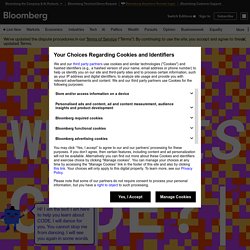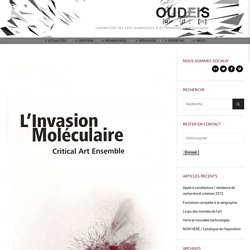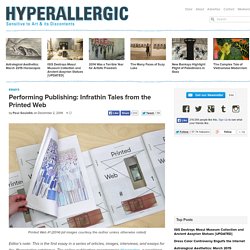

Paul Ford: What is Code? A computer is a clock with benefits.

They all work the same, doing second-grade math, one step at a time: Tick, take a number and put it in box one. Tick, take another number, put it in box two. Tick, operate (an operation might be addition or subtraction) on those two numbers and put the resulting number in box one. Tick, check if the result is zero, and if it is, go to some other box and follow a new set of instructions. You, using a pen and paper, can do anything a computer can; you just can’t do those things billions of times per second. Apple has always made computers; Microsoft used to make only software (and occasional accessory hardware, such as mice and keyboards), but now it’s in the hardware business, with Xbox game consoles, Surface tablets, and Lumia phones.
So many things are computers, or will be. When you “batch” process a thousand images in Photoshop or sum numbers in Excel, you’re programming, at least a little. 2.1 How Do You Type an “A”? The Aesthetics of Erasure. Education aux cultures et pratiques numériques / Bilan 2012-2013. Oudeis, laboratoire des arts numériques, électroniques et médiatiques. En 2006, Sandra Bébié-Valérian, dans le cadre d’un travail de recherche, a entrepris la traduction de l’ouvrage Molecular Invasion du Critical Art Ensemble, (Autonomedia/Brooklyn/2001).

Elle en a rédigé également la préface, l’introduction et la postface. Postface : Durant ces six dernières années le travail du Critical Art Ensemble s’est focalisé sur le vaste champ de la biotechnologie. Le groupe a tenté d’identifier les problématiques clés et aspire à se concentrer sur le discours public dans un effort d’exploitation de la vacuité actuelle de l’autorité.
En tant que médiatistes tactiques, le groupe a accompli cinq projets théâtraux participatifs majeurs qui examinent les aspects particuliers de la biotechnologie. Ces projets pointent les zones extrêmement problématiques de ce domaine, dans sa représentation associée, et dans les politiques sociales gérant le développement des applications et du déploiement. Performing Publishing: Infrathin Tales from the Printed Web. Printed Web #1 (2014) (all images courtesy the author unless otherwise noted) Editor’s note: This is the first essay in a series of articles, images, interviews, and essays for the #hypersalon catalogue.

The online publication accompanies Hypersalon, a weeklong series (December 2–7, 2014) of salon-style exhibitions, artist talks, and conversations on the conditions of networked culture in contemporary art. In “Search, Compile, Publish” I identify some of the tactics used by artists who make books and other printout matter in the post-digital print space: grabbing, scraping, hunting, and performing. Together with an abundance of free content and easy access to print-on-demand technology, this has now become a way to talk about an evolving artists’ web-to-print practice in the post-digital space. This flux between screen and the printed page is apparent in the works that I collect for Library of the Printed Web and publish in Printed Web. This infrathin condition surrounds us.
Magazine / archive / Rihanna at Saturday Night Live. Lauren Cornell: We’re living in a moment when contemporary art has unprecedented popularity.

The expanded art market has lured celebrity interest into its VIP echelons; rappers are reflecting on the canon; pop singers self-identify as individual avant-garde movements. Swarms of attention surround these spectacular events and yet, at the same time, the future of mass culture is in question due to media’s dispersion and personalization. Art is getting more popular, as artists are grappling with how to mobilize a deeply changed popular culture. Ed Halter: I think the somewhat surprising rise of Marina Abramović is telling, here, in the ways that both the art world and popular culture have changed. Her work doesn’t at first seem to be made for mass appeal; she doesn’t play with the codes of popular culture, like artists along the lines of Jeff Koons or Damien Hirst.